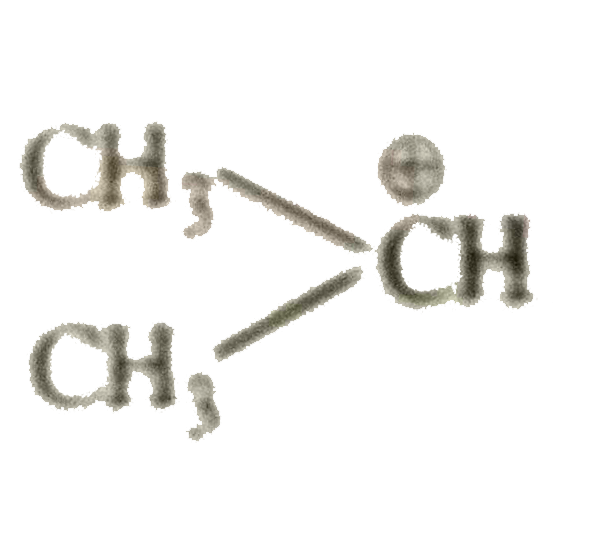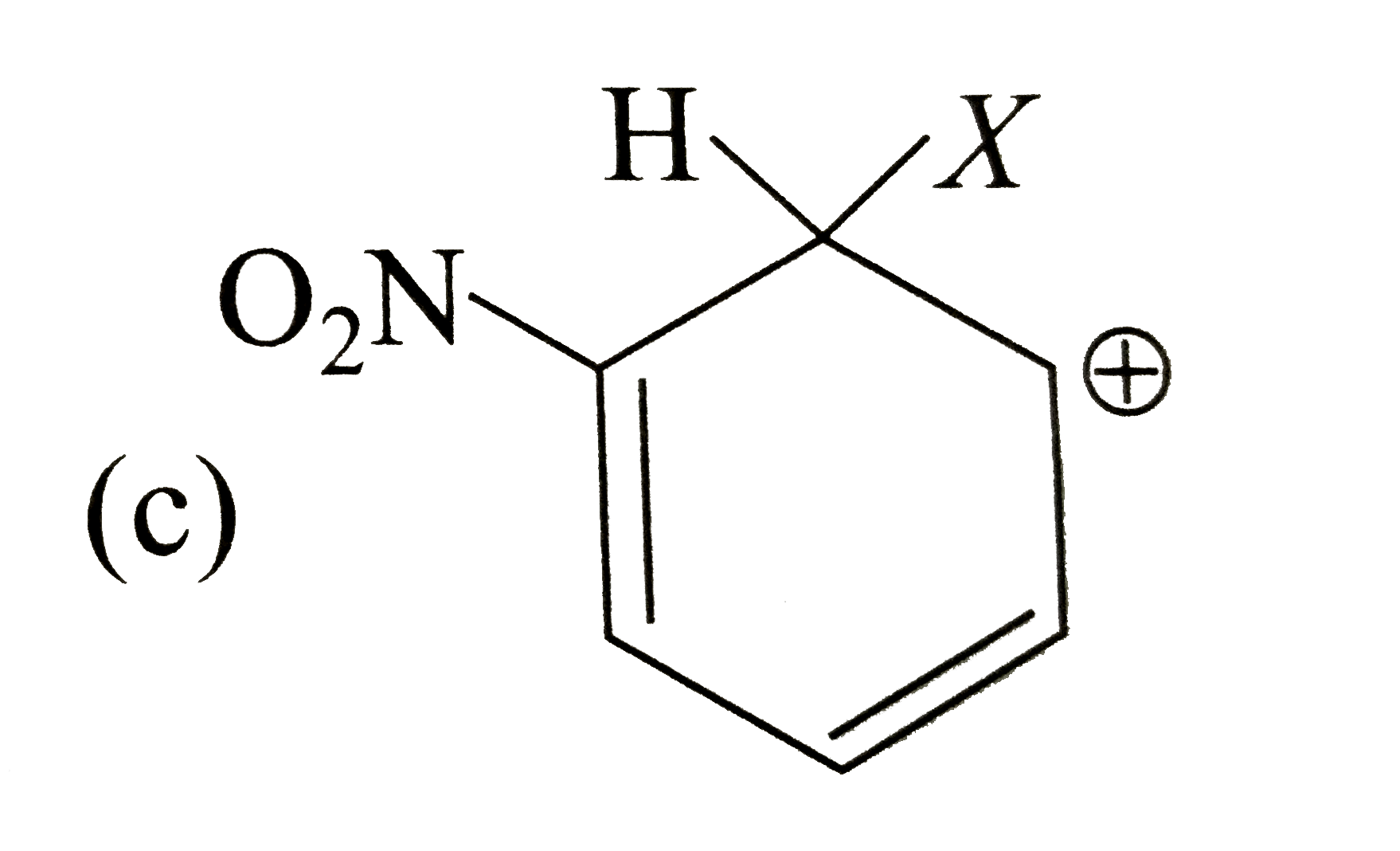Which of the following carbocation is most stable?
(CH3)3C⊕CH2
(CH3)3⊕C
CH3CH2⊕CH2
CH3⊕CHCH2CH3
The correct Answer is:B
To determine which of the given carbocations is the most stable, we can follow these steps:
1. Understand Carbocation Stability:
The stability of carbocations generally follows this order: Tertiary (3°) > Secondary (2°) > Primary (1°) > Methyl. This means that tertiary carbocations are the most stable due to the greater number of alkyl groups that can donate electron density to the positively charged carbon.
2. Analyze Each Option:
- Option 1: This carbocation has one carbon attached to the positively charged carbon (a primary carbocation). Its stability is low.
- Option 2: This carbocation has three methyl groups attached to the positively charged carbon (a tertiary carbocation). Its stability is high.
- Option 3: This carbocation has one carbon attached to the positively charged carbon (a primary carbocation). Its stability is low.
- Option 4: This carbocation has two carbons attached to the positively charged carbon (a secondary carbocation). Its stability is moderate.
3. Consider Hyperconjugation:
Hyperconjugation is the phenomenon where alkyl groups can donate electron density to the positively charged carbon, stabilizing the carbocation. The more alkyl groups attached, the more hyperconjugation structures can be formed.
- Option 1: 1 hyperconjugation structure (primary).
- Option 2: 10 hyperconjugation structures (tertiary).
- Option 3: 3 hyperconjugation structures (primary).
- Option 4: 6 hyperconjugation structures (secondary).
4. Determine the Most Stable Carbocation:
Based on the analysis, Option 2 (the tertiary carbocation) has the highest stability due to the presence of three alkyl groups and the maximum number of hyperconjugation structures (10).
Conclusion
The most stable carbocation among the given options is Option 2.
---
The stability of carbocations generally follows this order: Tertiary (3°) > Secondary (2°) > Primary (1°) > Methyl. This means that tertiary carbocations are the most stable due to the greater number of alkyl groups that can donate electron density to the positively charged carbon.
- Option 1: This carbocation has one carbon attached to the positively charged carbon (a primary carbocation). Its stability is low.
- Option 2: This carbocation has three methyl groups attached to the positively charged carbon (a tertiary carbocation). Its stability is high.
- Option 3: This carbocation has one carbon attached to the positively charged carbon (a primary carbocation). Its stability is low.
- Option 4: This carbocation has two carbons attached to the positively charged carbon (a secondary carbocation). Its stability is moderate.
Hyperconjugation is the phenomenon where alkyl groups can donate electron density to the positively charged carbon, stabilizing the carbocation. The more alkyl groups attached, the more hyperconjugation structures can be formed.
- Option 1: 1 hyperconjugation structure (primary).
- Option 2: 10 hyperconjugation structures (tertiary).
- Option 3: 3 hyperconjugation structures (primary).
- Option 4: 6 hyperconjugation structures (secondary).
Based on the analysis, Option 2 (the tertiary carbocation) has the highest stability due to the presence of three alkyl groups and the maximum number of hyperconjugation structures (10).
The most stable carbocation among the given options is Option 2.
Topper's Solved these Questions
- PURIFICATION OF ORGANIC COMPOUNDS AND QUALITATIVE AND QUANTITATIVE ANALYSISBOOK - CENGAGE CHEMISTRYCHAPTER - PURIFICATION OF ORGANIC COMPOUNDS AND QUALITATIVE AND QUANTITATIVE ANALYSISEXERCISE - Linked Comprehension Type
25 Videos
- PURIFICATION OF ORGANIC COMPOUNDS AND QUALITATIVE AND QUANTITATIVE ANALYSISBOOK - CENGAGE CHEMISTRYCHAPTER - PURIFICATION OF ORGANIC COMPOUNDS AND QUALITATIVE AND QUANTITATIVE ANALYSISEXERCISE - Multiple Correct Answers Type
10 Videos
- PURIFICATION OF ORGANIC COMPOUNDS AND QUALITATIVE AND QUANTITATIVE ANALYSISBOOK - CENGAGE CHEMISTRYCHAPTER - PURIFICATION OF ORGANIC COMPOUNDS AND QUALITATIVE AND QUANTITATIVE ANALYSISEXERCISE - Subjective Type
11 Videos
- PERIODIC CLASSIFICATION OF ELEMENTS AND GENERAL INORGANIC CHEMISTRYBOOK - CENGAGE CHEMISTRYCHAPTER - PERIODIC CLASSIFICATION OF ELEMENTS AND GENERAL INORGANIC CHEMISTRYEXERCISE - Exercises (Archives )Subjective
4 Videos
- REDOX REACTIONSBOOK - CENGAGE CHEMISTRYCHAPTER - REDOX REACTIONSEXERCISE - Archives (Integers)
1 Videos
Similar Questions
Knowledge Check
Which of the following carbocations is most stable ?
A B
B C
C D
D
Which of the following carbocations is most stable ?
A B
B C
C D
D
Which of the following carbocations is most stable?
A B
B C
C D
D
Which one of the following carbocations is most stable ?
View SolutionWhich one of the following Carbocation is most stable :
View SolutionWhich one of the following carbocations is most stable?
View SolutionWhich of the following carbocation will be most stable ?
View SolutionWhich carbocation is most stable
View Solution

